window MITSUBISHI ENDEAVOR 2004 Service Repair Manual
[x] Cancel search | Manufacturer: MITSUBISHI, Model Year: 2004, Model line: ENDEAVOR, Model: MITSUBISHI ENDEAVOR 2004Pages: 3870, PDF Size: 98.47 MB
Page 278 of 3870
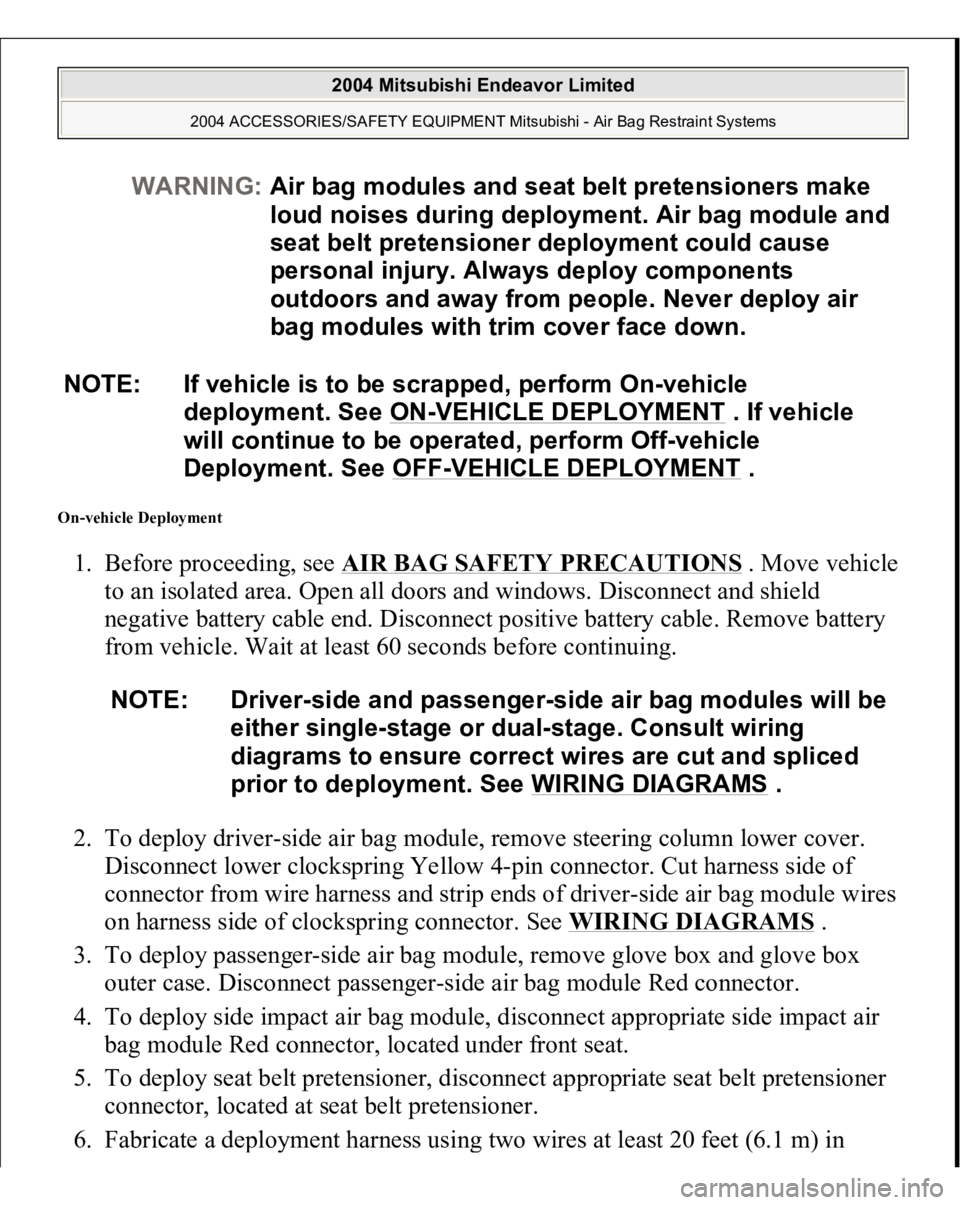
On-vehicle Deployment 1. Before proceeding, see
AIR BAG SAFETY PRECAUTIONS
. Move vehicle
to an isolated area. Open all doors and windows. Disconnect and shield
negative battery cable end. Disconnect positive battery cable. Remove battery
from vehicle. Wait at least 60 seconds before continuing.
2. To deploy driver-side air bag module, remove steering column lower cover.
Disconnect lower clockspring Yellow 4-pin connector. Cut harness side of
connector from wire harness and strip ends of driver-side air bag module wires
on harness side of clockspring connector. See
WIRING DIAGRAMS
.
3. To deploy passenger-side air bag module, remove glove box and glove box
outer case. Disconnect passenger-side air bag module Red connector.
4. To deploy side impact air bag module, disconnect appropriate side impact air
bag module Red connector, located under front seat.
5. To deploy seat belt pretensioner, disconnect appropriate seat belt pretensioner
connector, located at seat belt pretensioner.
6. Fabricate a de
ployment harness usin
g two wires at least 20 feet
(6.1 m
) in
WARNING:Air bag modules and seat belt pretensioners make
loud noises during deployment. Air bag module and
seat belt pretensioner deployment could cause
personal injury. Always deploy components
outdoors and away from people. Never deploy air
bag modules with trim cover face down.
NOTE: If vehicle is to be scrapped, perform On-vehicle
deployment. See ON
-VEHICLE DEPLOYMENT
. If vehicle
will continue to be operated, perform Off-vehicle
Deployment. See OFF
-VEHICLE DEPLOYMENT
.
NOTE: Driver-side and passenger-side air bag modules will be
either single-stage or dual-stage. Consult wiring
diagrams to ensure correct wires are cut and spliced
prior to deployment. See WIRING DIAGRAMS
.
2004 Mitsubishi Endeavor Limited
2004 ACCESSORIES/SAFETY EQUIPMENT Mitsubishi - Air Bag Restraint Systems
Page 279 of 3870
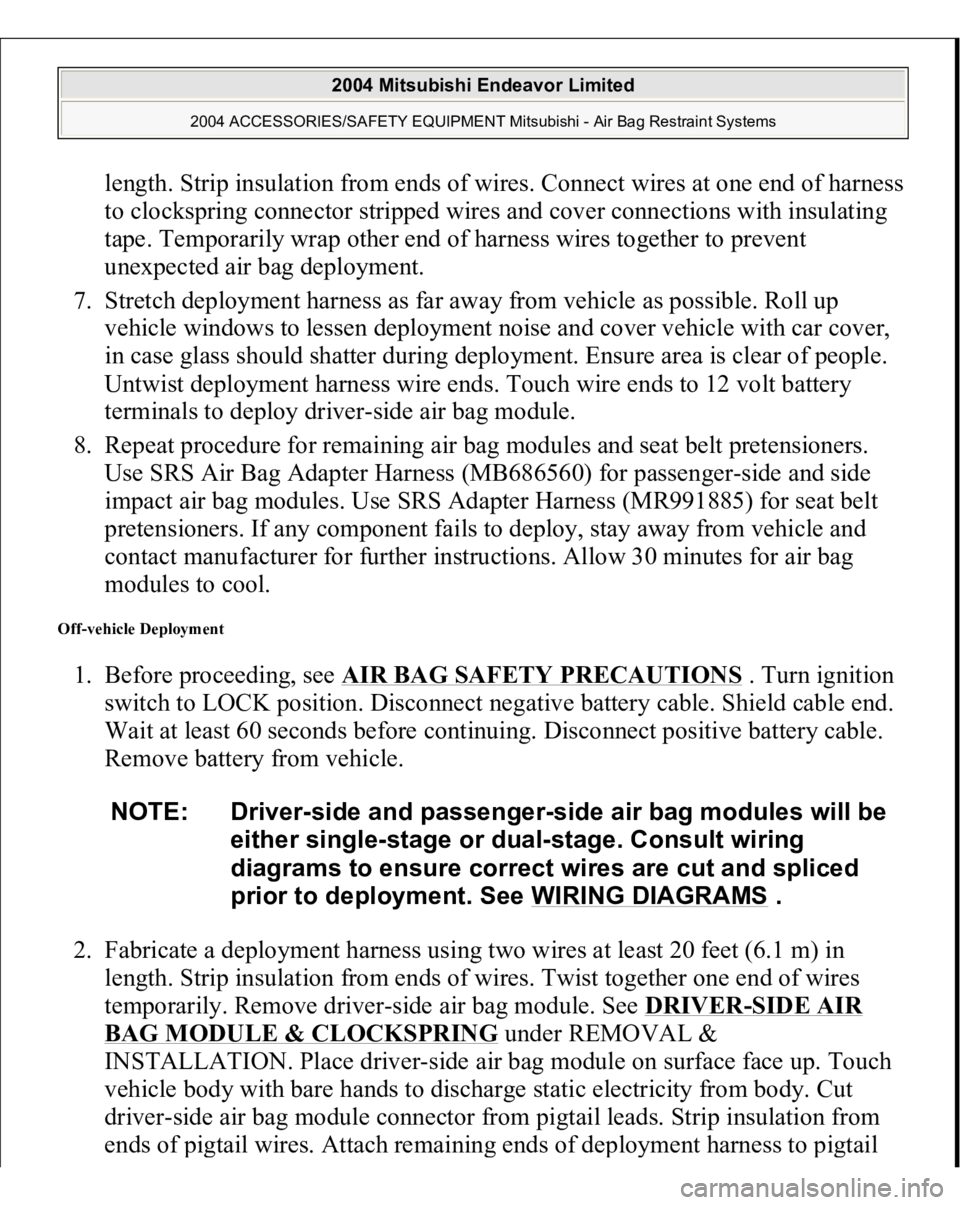
length. Strip insulation from ends of wires. Connect wires at one end of harness
to clockspring connector stripped wires and cover connections with insulating
tape. Temporarily wrap other end of harness wires together to prevent
unexpected air bag deployment.
7. Stretch deployment harness as far away from vehicle as possible. Roll up
vehicle windows to lessen deployment noise and cover vehicle with car cover,
in case glass should shatter during deployment. Ensure area is clear of people.
Untwist deployment harness wire ends. Touch wire ends to 12 volt battery
terminals to deploy driver-side air bag module.
8. Repeat procedure for remaining air bag modules and seat belt pretensioners.
Use SRS Air Bag Adapter Harness (MB686560) for passenger-side and side
impact air bag modules. Use SRS Adapter Harness (MR991885) for seat belt
pretensioners. If any component fails to deploy, stay away from vehicle and
contact manufacturer for further instructions. Allow 30 minutes for air bag
modules to cool.
Off-vehicle Deployment 1. Before proceeding, see
AIR BAG SAFETY PRECAUTIONS
. Turn ignition
switch to LOCK position. Disconnect negative battery cable. Shield cable end.
Wait at least 60 seconds before continuing. Disconnect positive battery cable.
Remove battery from vehicle.
2. Fabricate a deployment harness using two wires at least 20 feet (6.1 m) in
length. Strip insulation from ends of wires. Twist together one end of wires
temporarily. Remove driver-side air bag module. See
DRIVER
-SIDE AIR
BAG MODULE & CLOCKSPRING
under REMOVAL &
INSTALLATION. Place driver-side air bag module on surface face up. Touch
vehicle body with bare hands to discharge static electricity from body. Cut
driver-side air bag module connector from pigtail leads. Strip insulation from
ends of
pigtail wires. Attach remainin
g ends of de
ployment harness to
pigtail NOTE: Driver-side and passenger-side air bag modules will be
either single-stage or dual-stage. Consult wiring
diagrams to ensure correct wires are cut and spliced
prior to deployment. See WIRING DIAGRAMS
.
2004 Mitsubishi Endeavor Limited
2004 ACCESSORIES/SAFETY EQUIPMENT Mitsubishi - Air Bag Restraint Systems
Page 987 of 3870
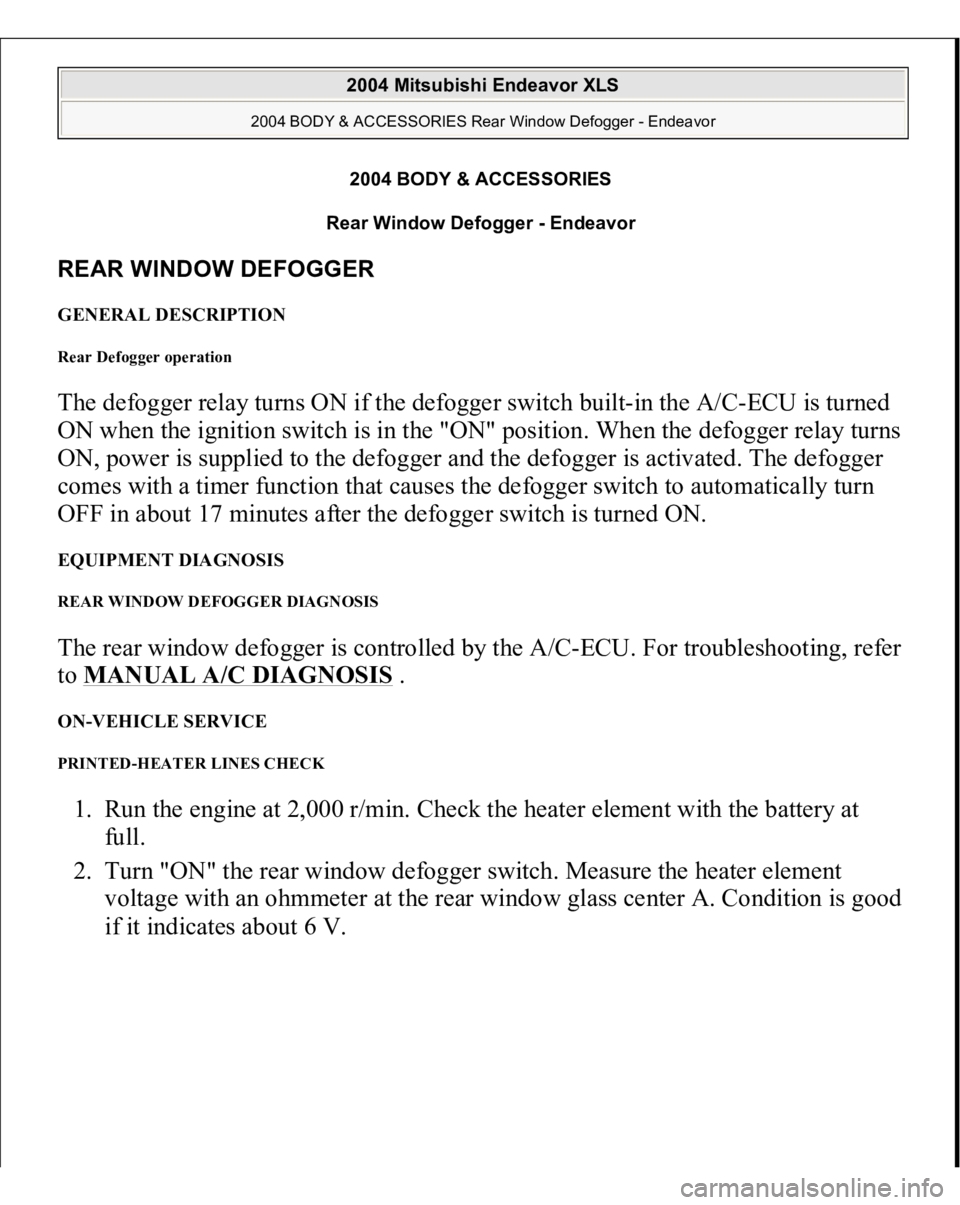
2004 BODY & ACCESSORIES
Rear Window Defogger - Endeavor
REAR WINDOW DEFOGGER GENERAL DESCRIPTION Rear Defogger operation The defogger relay turns ON if the defogger switch built-in the A/C-ECU is turned
ON when the ignition switch is in the "ON" position. When the defogger relay turns
ON, power is supplied to the defogger and the defogger is activated. The defogger
comes with a timer function that causes the defogger switch to automatically turn
OFF in about 17 minutes after the defogger switch is turned ON. EQUIPMENT DIAGNOSIS REAR WINDOW DEFOGGER DIAGNOSIS The rear window defogger is controlled by the A/C-ECU. For troubleshooting, refer
to MANUAL A/C DIAGNOSIS
.
ON-VEHICLE SERVICE PRINTED-HEATER LINES CHECK 1. Run the engine at 2,000 r/min. Check the heater element with the battery at
full.
2. Turn "ON" the rear window defogger switch. Measure the heater element
voltage with an ohmmeter at the rear window glass center A. Condition is good
if it indicates about 6 V.
2004 Mitsubishi Endeavor XLS
2004 BODY & ACCESSORIES Rear Window Defogger - Endeavor
2004 Mitsubishi Endeavor XLS
2004 BODY & ACCESSORIES Rear Window Defogger - Endeavor
Page 988 of 3870
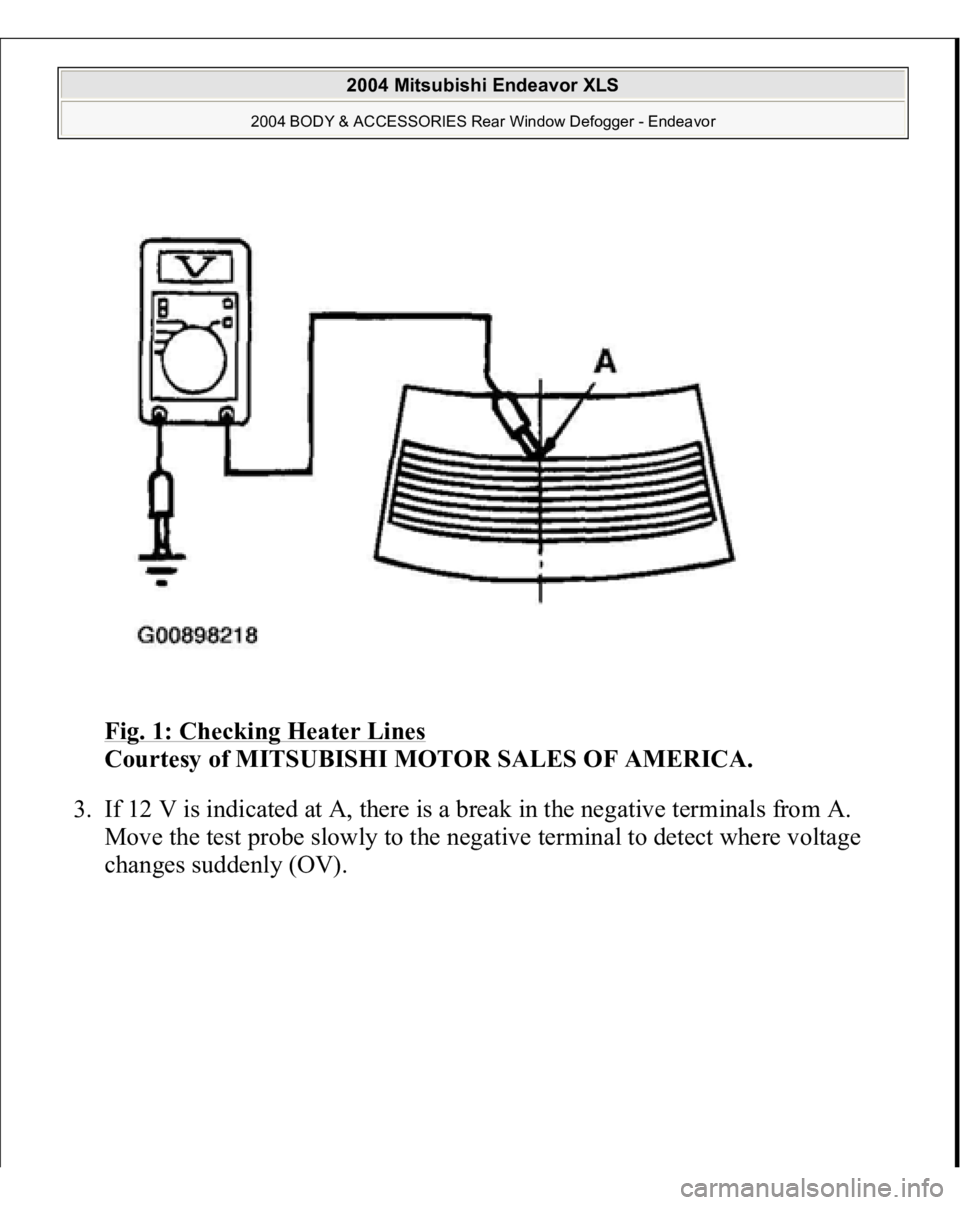
Fig. 1: Checking Heater Lines
Courtesy of MITSUBISHI MOTOR SALES OF AMERICA.
3. If 12 V is indicated at A, there is a break in the negative terminals from A.
Move the test probe slowly to the negative terminal to detect where voltage
changes suddenly (OV).
2004 Mitsubishi Endeavor XLS
2004 BODY & ACCESSORIES Rear Window Defogger - Endeavor
Page 989 of 3870
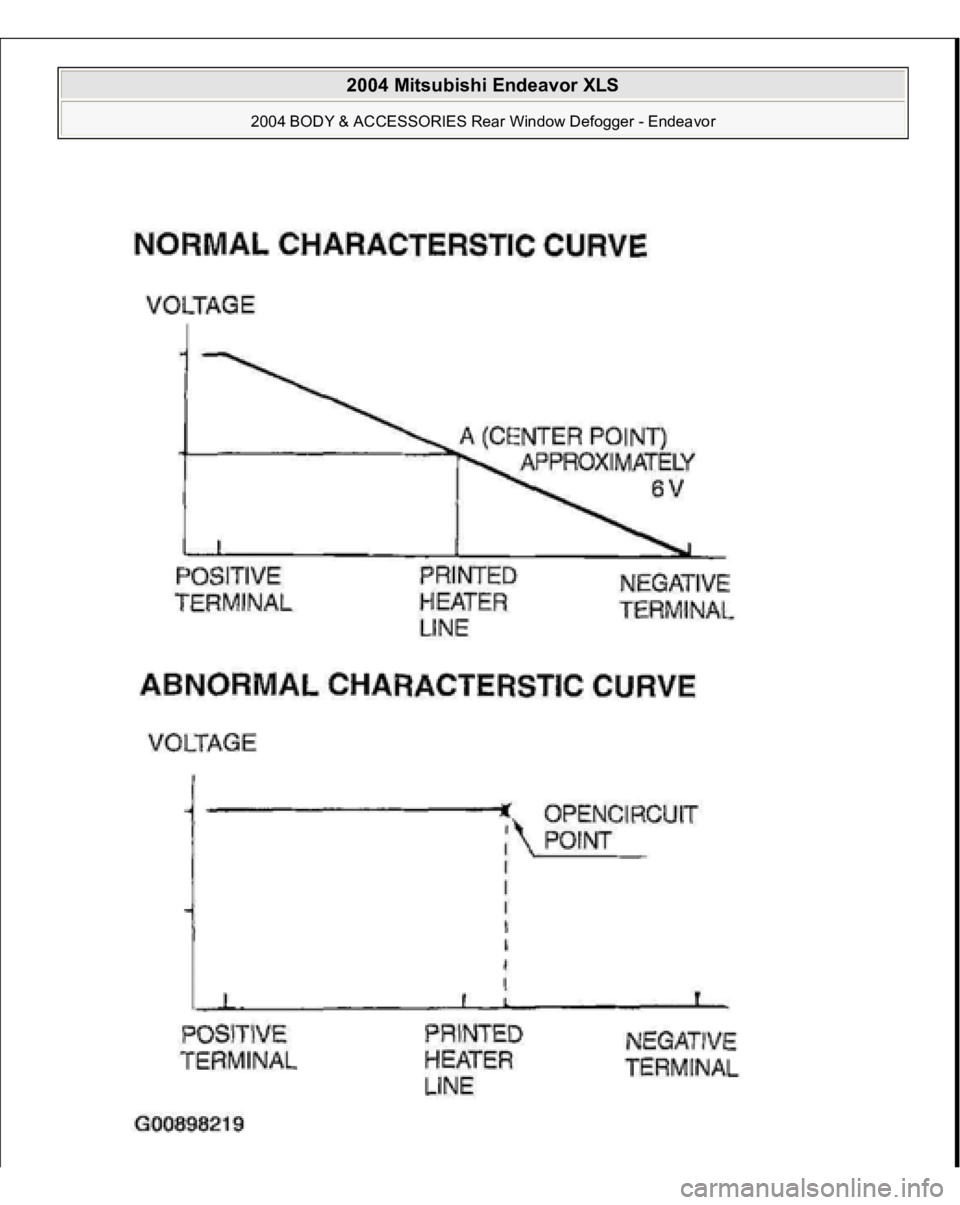
2004 Mitsubishi Endeavor XLS
2004 BODY & ACCESSORIES Rear Window Defogger - Endeavor
Page 990 of 3870
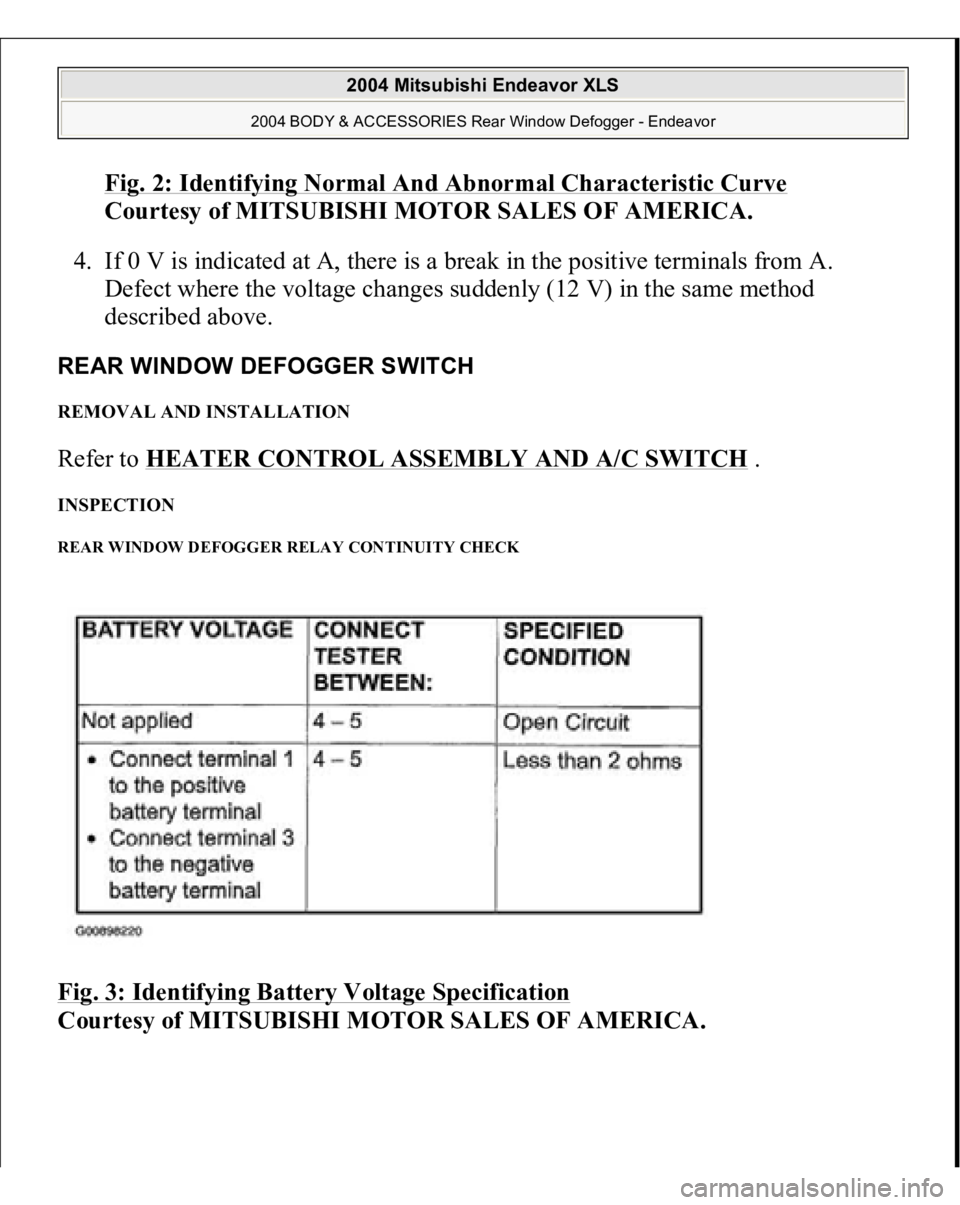
Fig. 2: Identifying Normal And Abnormal Characteristic Curve
Courtesy of MITSUBISHI MOTOR SALES OF AMERICA.
4. If 0 V is indicated at A, there is a break in the positive terminals from A.
Defect where the voltage changes suddenly (12 V) in the same method
described above.
REAR WINDOW DEFOGGER SWITCH REMOVAL AND INSTALLATION Refer to HEATER CONTROL ASSEMBLY AND A/C SWITCH
.
INSPECTION REAR WINDOW DEFOGGER RELAY CONTINUITY CHECK Fig. 3: Identifying Battery Voltage Specification
Courtesy of MITSUBISHI MOTOR SALES OF AMERICA.
2004 Mitsubishi Endeavor XLS
2004 BODY & ACCESSORIES Rear Window Defogger - Endeavor
Page 991 of 3870
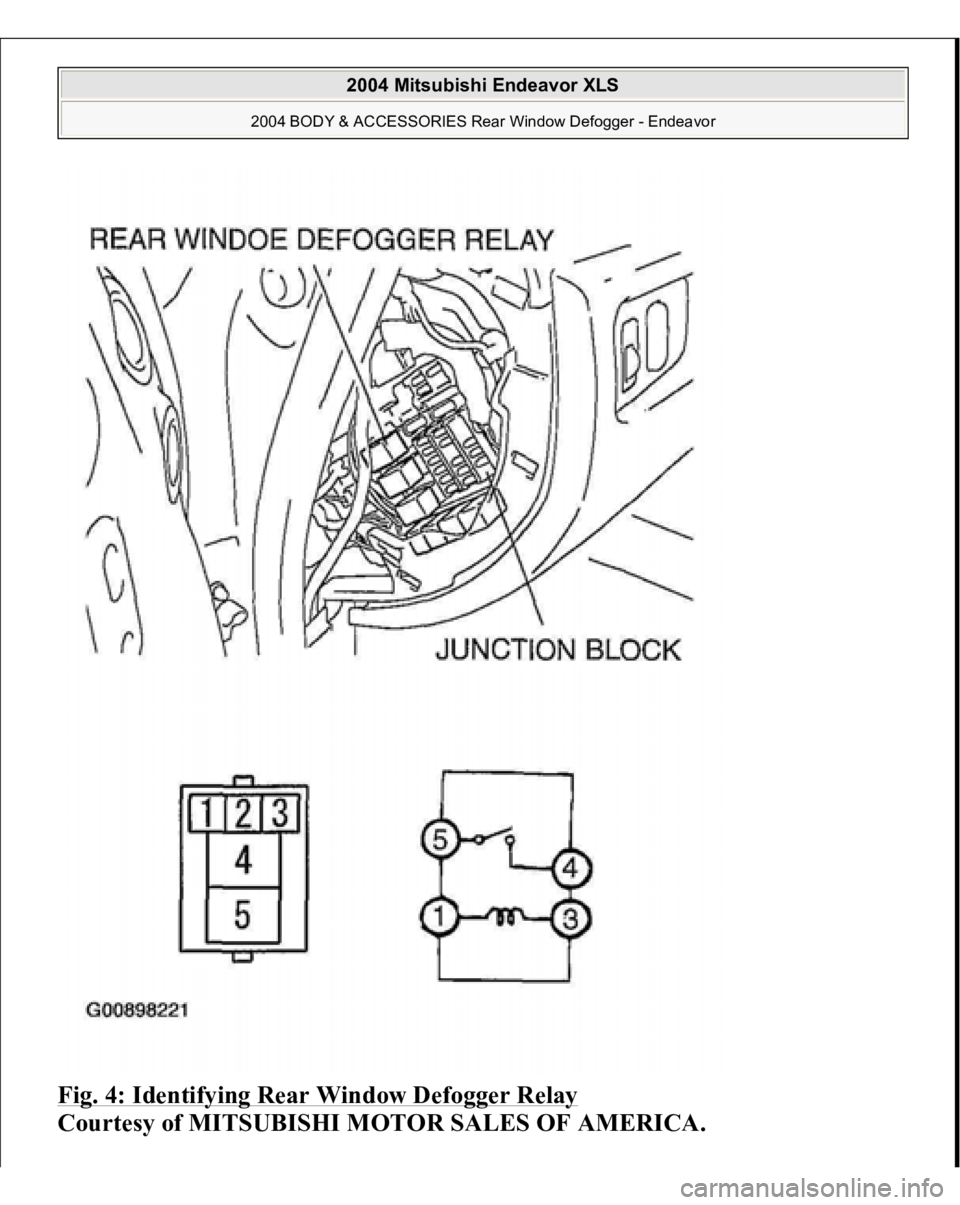
Fig. 4: Identifying Rear Window Defogger Relay
Courtesy of MITSUBISHI MOTOR SALES OF AMERICA.
2004 Mitsubishi Endeavor XLS
2004 BODY & ACCESSORIES Rear Window Defogger - Endeavor
Page 992 of 3870

2004 BODY & ACCESSORIES
Door - Endeavor
GENERAL DESCRIPTION OPERATION CENTRAL DOOR LOCKING SYSTEM The central door locking system operates the door lock actuator to lock or unlock
the doors and liftgate using the door lock switch built into the front power window
(main or sub) switch or key built into the driver's side door outside handle. The
system has the following operations and features:
All doors and liftgate can be locked using the door lock switch built into the
front power window (main or sub) switch. Insert the key into the driver's key cylinder and turn once to the unlock side to
unlock the driver's door. Turn the key once again to the unlock side to unlock
all doors and the liftgate. The key reminder function automatically unlocks all doors and liftgate when
door lock operation is performed and the front doors are opened while the key
is inserted into the ignition switch.
POWER WINDOWS When the power window (main or sub) switch is operated, the door windows will
open or close. This system has the following operations and features:
A power window lock switch on the power window main switch prevents the
door window glass from opening/closing with the front passenger's and rear
power window sub switch. The power window of the door window glass can be opened/closed for 30
seconds with the timer function after the ignition switch is turned OFF. (The
timer expires if the front door < LH or RH> is opened when the timer is in
operation). The power window main switch contains a one-touch down switch that will
automatically open the driver's side door window only.
2004 Mitsubishi Endeavor LS
2004 BODY & ACCESSORIES Door - Endeavor
2004 Mitsubishi Endeavor LS
2004 BODY & ACCESSORIES Door - Endeavor
Page 993 of 3870

CENTRAL DOOR LOCKING SYSTEM DIAGNOSIS The central door locking system is controlled by the simplified wiring system
(SWS). Refer to SYMPTOM CHART
.
POWER WINDOW DIAGNOSIS The power window is controlled by the simplified wiring system (SWS). Refer to
SYMPTOM CHART
.
DOOR DIAGNOSIS INTRODUCTION TO GLASS AND DOOR DIAGNOSIS Glass and door faults include water leaks and improper opening and closing. Causes
for these faults can include faults in the glass, weatherstrip, drain hole, waterproof
film or door installation. GLASS AND DOOR DIAGNOSTIC TROUBLESHOOTING STRATEGY Use these steps to plan your diagnostic strategy. If you follow them carefully, you
will be sure that you have exhausted most of the possible ways to find a glass and
door fault.
1. Gather information from the customer.
2. Verify that the condition described by the customer exists.
3. Find the malfunction by following the Symptom Chart.
4. Verify malfunction is eliminated. SYMPTOM CHART SYMPTOM REFERENCE SYMPTOM
INSPECTION
PROCEDURE
REFERENCE PAGE
Water leak through door
window glass
1
INSPECTION
PROCEDURE 1: Water
Leak Throu
gh Door
Window Glass
2004 Mitsubishi Endeavor LS
2004 BODY & ACCESSORIES Door - Endeavor
Page 994 of 3870
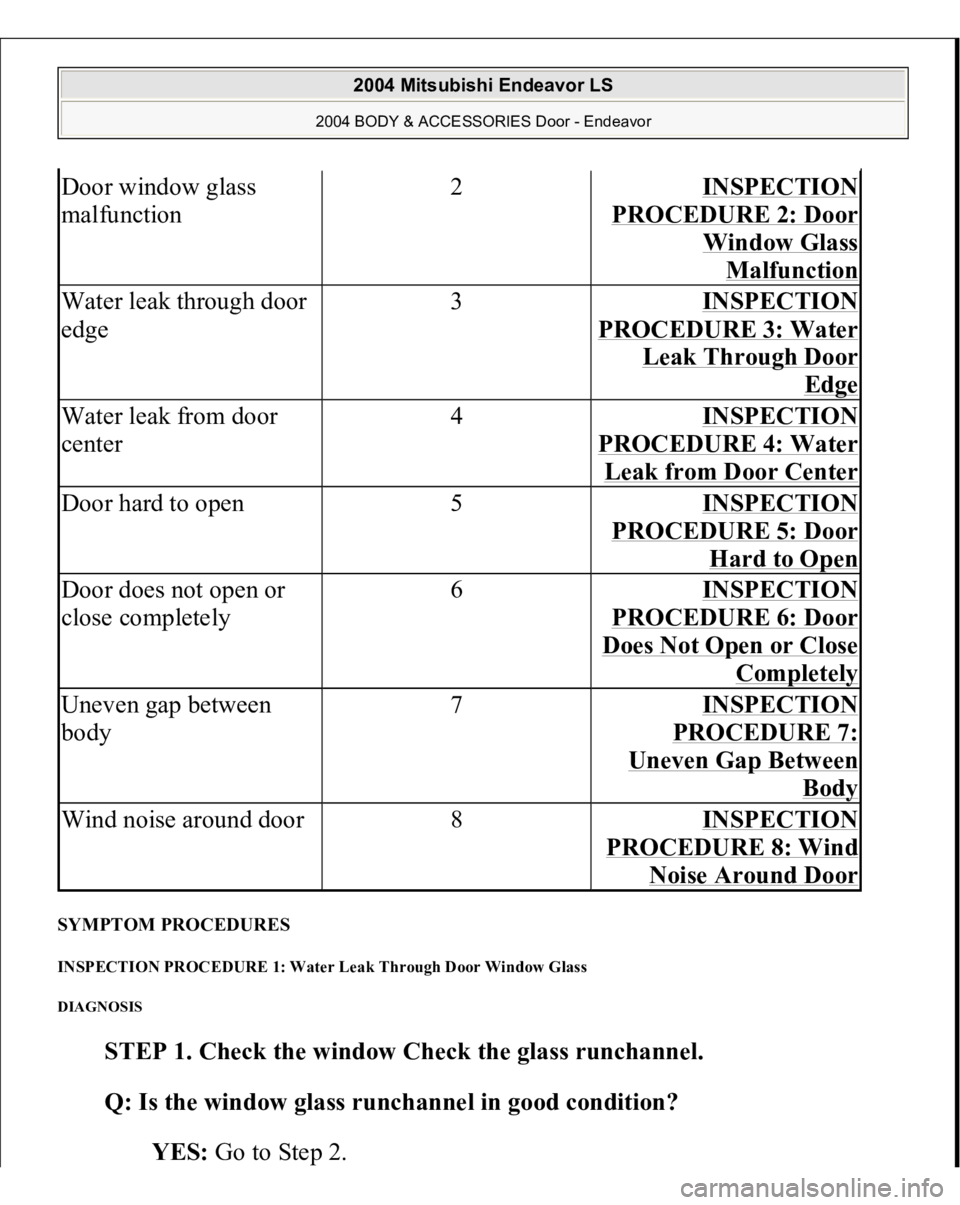
SYMPTOM PROCEDURES INSPECTION PROCEDURE 1: Water Leak Through Door Window Glass DIAGNOSIS
STEP 1. Check the window Check the glass runchannel.
Q: Is the window glass runchannel in good condition?
YES: Go to Step 2.
Door window glass
malfunction
2
INSPECTION
PROCEDURE 2: Door
Window Glass Malfunction
Water leak through door
edge
3
INSPECTION
PROCEDURE 3: Water
Leak Throu
gh Door Edge
Water leak from door
center
4
INSPECTION
PROCEDURE 4: Water Leak from Door Center
Door hard to open
5
INSPECTION
PROCEDURE 5: Door
Hard to Open
Door does not open or
close completely
6
INSPECTION
PROCEDURE 6: Door Does Not Open or Close
Completely
Uneven gap between
body
7
INSPECTION
PROCEDURE 7:
Uneven Gap Between
Body
Wind noise around door
8
INSPECTION
PROCEDURE 8: Wind
Noise Around Door
2004 Mitsubishi Endeavor LS
2004 BODY & ACCESSORIES Door - Endeavor